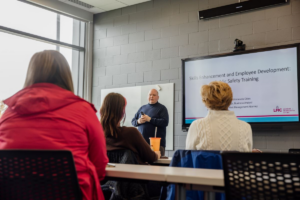League Staff Learn About First Responder Training at HERO Training Center
This fall, League of Minnesota Cities staff members traveled to Cottage Grove where they toured the Health Emergency Response Occupations (HERO) Training Center—the largest training facility in Minnesota for police, fire, and emergency medical services (EMS) personnel. The center, constructed and jointly owned by the cities of Cottage Grove and Woodbury, offers roughly 198,000 square feet of training space and allows all three first responder disciplines to train together as a team. The center’s facilities, courses, and other resources allow first responders to train safely and efficiently and better the lives of the residents they serve.
According to the most recent HERO Training Center Annual Report, 55 government agencies, organizations, and owner-agency departments used the facility in 2022. Read the full report (pdf). HERO Training Center Public Safety Training Manager Daniel Anselment and Administrative Training Coordinator Brianna Zeterlu, who have nearly 20 years of experience as police officers combined, welcomed League staff in the center’s main lobby before showing the entire concourse, which includes a 12-lane shooting range that’s open to the public on weekends (not pictured below).
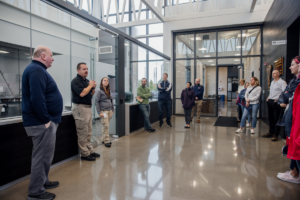
The HERO Training Center offers indoor, reality-based training rooms, where officers and instructors can create unlimited room configurations by rearranging the walls and FOAM training furniture to replicate active crime scenes where every move must be made with caution. The walls of these rooms are durable enough to allow for marking and non-marking simulation rounds.
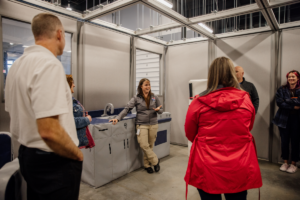
Of course, the indoor, reality-based rooms can’t account for every scenario first responders will endure, but the center’s training simulator technology provides over 700 other training scenarios simulations. The on-screen simulations include active shooter scenarios in which officers practice their target shooting with training weapons, along with mental health crisis scenarios allowing for first responders to practice their de-escalation skills. This controlled environment allows first responders to safely prepare for the life-or-death situations they will encounter while on duty.
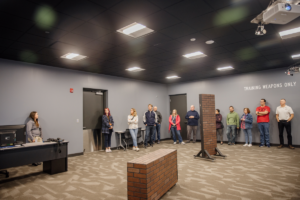
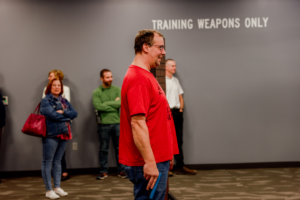
The center’s main building includes a multi-level garage, which allows firefighters to train for multi-story building fires where their truck ladders must be utilized.
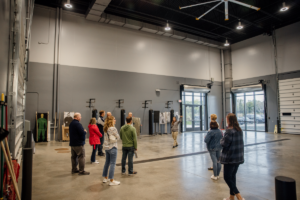
The center also offers over 150,000 square feet of outdoor training space, allowing first responders to train for traffic scenarios. The simulation house and commercial building found outside the main building provide officers with reality-based environments to practice safely executing search warrants and can also withstand smoke and fire.
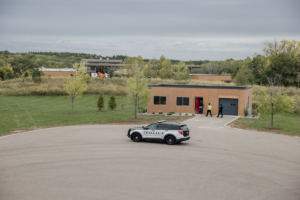
Before the tour, League of Minnesota Cities Insurance Trust (MCIT) Management Attorney Chris Smith and LMCIT Business Analyst Nick Pomije presented on issues related to intergovernmental cooperation, tort liability, LMCIT coverage, and data specifically related to police liability, workers’ compensation, PTSD claims, and the Benchmark Analytics study.
The staff tour was organized by the League’s Skill Enhancement and Employee Development (SEED) Committee, which plans professional development trainings and learning events for non-supervisory staff to learn more about the work all League departments carry out and the members they serve. League staff members left the HERO Training Center with a better understanding of how vital first responder training is to limiting workers’ compensation and liability claims and keeping our public safety officers and the communities they serve safe and thriving.
